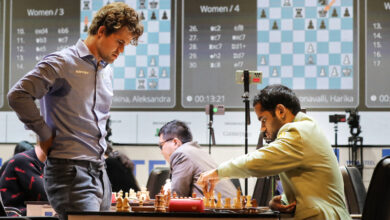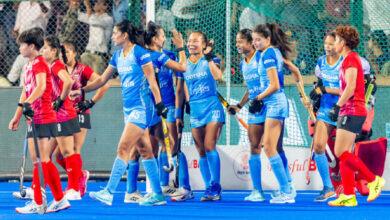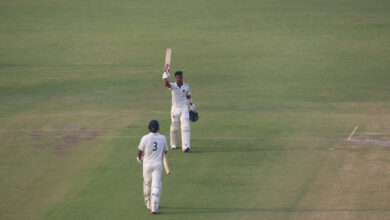On comeback trail, PV Sindhu trying not to be predictable

PV Sindhu was 21 years old when she won her silver medal at the Rio Olympics. She was 26 when she won the bronze medal at the Tokyo Olympics. She will be touching 29 when the Paris Games open at the nearest theatres in a year. In a year where the chaos of Olympic qualifications will start to crescendo, Sindhu continues her return from one of her longest injury layoffs – a stress fracture in her left ankle – at the India Open 750.
Age and injury come for every athlete and Sindhu is no different. No one understands this better than Park Tae-sang, the Korean who has been training her since 2019.
“Sindhu is getting older every year. Many fans remember the Sindhu from the 2019 World Championships. But that was years ago. Now my focus is on maintaining Sindhu’s physicality, her skill and her on-court performance,” coach Park tells The Indian Express on the sidelines of the tournament on Monday.
The injury in particular has been tough on Sindhu. While officially returning to training in October, the duo decided that it was best to opt out of the season-ending World Tour Finals. Part of the reason was her movement, particularly when she moved backwards and towards the left. At the training camp before the Finals, she went to Park and talked about the issue. Park revealed that it was a psychological problem at the time and not a physical one.
Sindhu spoke on her return in Malaysia, saying, “Coming back from injury is not easy. The confidence to get up there and play your best – it takes a lot of time.” She then added, “After the injury, coming back itself is such a hard thing. Playing against Carolina (Marin) – I mean we should be happy that we’ve attempted to play against her after such an injury.”
#IndiaOpen2023 #Badminton
CAUGHT IN ACTION: PV Sindhu in a practice session along with Kidambi Srikanth!
📹: Express video pic.twitter.com/KnAW2cwL29
— Express Sports (@IExpressSports) January 16, 2023
Part of managing the comeback has been to take things slow. Park specifically wants the onslaught of tournaments to not be a factor and for her to pick and choose the biggest titles until May, so that her body and mind can continue to heal. Malaysia and India were thus considered acceptable challenges – tournaments where she could continue to gain the sharpness and match fitness required to compete at her level and her competition. The regular intake of tournaments can begin post the Sudirman Cup, says Park.
Another part of it is her training sessions. If intense tournaments must be followed breaks to manage the body, then the training sessions must mirror that. One strong session, followed a light workout – diktats of Park who believes that this is the way to go about in an Olympic qualification year.
And even though the focus has been on the comeback, the additions to her ever-expanding game continue. Forever feared for the potency of length leaning into power that yields itself into a strong smash, Sindhu needs to continue adding more to her game.
PV Sindhu celebrates on the podium during the medal ceremony on Monday. (REUTERS/Jason Cairnduff)
Park has on multiple occasions spoken about Sindhu’s ‘weakness’ – her defence. To turn a cerebral attacking talent into a player with a wider array of options is a sound logical checkpoint to sit at, but questions still remain on how successful this arrangement can be.
“In her match against Marin last week, she employed the drop shot many times. It’s important she plays like this because all of her opponents are high-ranked and have already researched her style. They wait for her to smash. That was in 2019. It’s 2023 now and things have to be a little different,” says Park.
Different how? Part of it lies in when she chooses to employ her best weapons. “I don’t want her to copy other players. But when opponents are expecting her to smash, she needs to use other shots. She has to first make a chance and once it’s 100% ready, then use the smash. Sindhu has a great weapon in her smash but it’s diluted if the opponent is on the line and she chooses to go with that shot.”
There is also the work that needs to be done on retrieving shots – but according to the South Korean, that is an Indian problem rather than a Sindhu problem. The solution – practice six days a week with three or four of them dedicated to defensive work. Most of these practices revolve around Sindhu having to face two players at once, or sparring with one of the Indian men’s singles players. At the training session ahead of the Indian Open, Sindhu was regularly rotating play between Kidambi Srikanth and Lakshya Sen.
“Having tough practices is important because then in a real-match situation, problems start to look easy to solve,” says Park.
Bringing India’s greatest badminton player to her absolute peak is now under construction.







